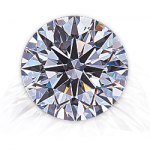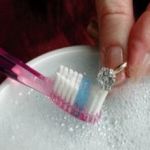
Every diamond is a miracle of time and place and chance. Like snowflakes, no two are exactly alike.
Until the middle of the twentieth century, there was no agreed-upon standard by which diamonds could be judged. GIA created the first, and now globally accepted standard for describing diamonds: Color, Clarity, Cut, and Carat Weight. Today, the 4Cs of Diamond Quality is the universal method for assessing the quality of any diamond, anywhere in the world.
The creation of the Diamond 4Cs meant two very important things: diamond quality could be communicated in a universal language, and diamond customers could now know exactly what they were about to purchase. But remember, diamonds with the same grade on paper do not always look the same. It is always best to compare diamonds side by side and decide which is more beautiful to you.
To learn more about how a diamond is graded, click the link below. You will be taken to the official GIA website. If you have any questions, please feel free to contact us at Broder Jewelry Design.
Click Here for the GIA Website.

Diamond is the hardest natural substance on Earth. It can cut any kind of rock or metal, but only another diamond can cut a diamond. In fact, a diamond must be heated to a temperature of 1292 degrees Fahrenheit before it will burn. Yet the oil deposited from the mere touch of a human finger can cause dirt to collect and make this nearly indestructible gemstone quickly lose its sparkling appeal.
So how can you keep your diamond looking its very best? The nonprofit GIA (Gemological Institute of America) – the world’s foremost authority in gemology – offers the following tips on diamond care:
Handle your diamond sparingly. Because diamonds are natural magnets for grease, they’re not easy to keep clean. Handling a diamond with your fingers provides enough oils from your skin (the type of “grease” that most affects diamonds) to alter the way your diamond looks.
Clean your diamond regularly. A simple plan to keep your diamond jewelry always looking beautiful is to soak the diamond in an ammonia-based household cleaner (such as window cleaner) overnight, once or twice weekly. You can also use liquid laundry detergent in warm water if you prefer. In the morning, remove the diamond from the cleaner and brush it with a soft, clean toothbrush (one that has not previously been used in any way, and that you reserve exclusively for cleaning your diamond) to remove any leftover dirt. Take extra care to brush the back of the diamond as this will be the area that has collected the most oil and dirt. Rinse with clean water.
Be aware that fragile settings and estate jewelry won’t take kindly to being scrubbed with a toothbrush, so use a soft touch. Then, just rinse the diamond with water and wipe with a soft, lint-free cloth.
Don’t use harmful solutions. Chlorine (as in household bleach) or abrasives (such as household cleansers or toothpaste) should never be used when cleaning diamonds, especially those set in jewelry. These erode some of the metals often used in diamond settings, and may loosen prongs, or even dissolve the metal completely.
Sometimes an ultrasonic cleaner is necessary to remove encrusted dirt on diamonds. By sending high frequency sound waves through a detergent solution, ultrasonic cleaners cause vibrating fluid to remove accumulated dirt and grime. However, they can also shake loose stones from their mounting, so this method shouldn’t be used on fragile settings (or estate jewelry), and is best undertaken by a professional jeweler.
Regular cleaning will keep your diamond jewelry in gleaming condition and ready to sparkle on that special occasion.
If you have additional questions on diamond care, just contact us at Broder Jewelry Design.

DIAMOND FUN FACTS!!
#1 If you put a diamond on your tongue, your tongue will start to get cooler! This happens because diamonds are great conductors of heat. Your tongue feels cool because the diamond is drawling heat out of your tongue.
#2 The engagement ring is worn on the third finger of the left hand because the early Egyptians believed that the vein of love ran directly from the heart to the top of the third finger.
#3 The largest diamond ever was 3106 carats.
#4 A diamond is four times harder than the next hardest material – corundum , from which rubies and sapphires are formed.
#5 Diamond deposits were discovered in North America in the 1840s
#6 A diamond is the hardest natural substance on earth, but if it is placed in an oven and the temperature is raised to about 763 degrees Celsius (1405 degrees Fahrenheit), it will simply vanish, without even ash remaining. Only a little carbon dioxide will have been released.
#7 The diamond industry employs approximately ten million people around the world, benefiting and providing healthcare for millions.